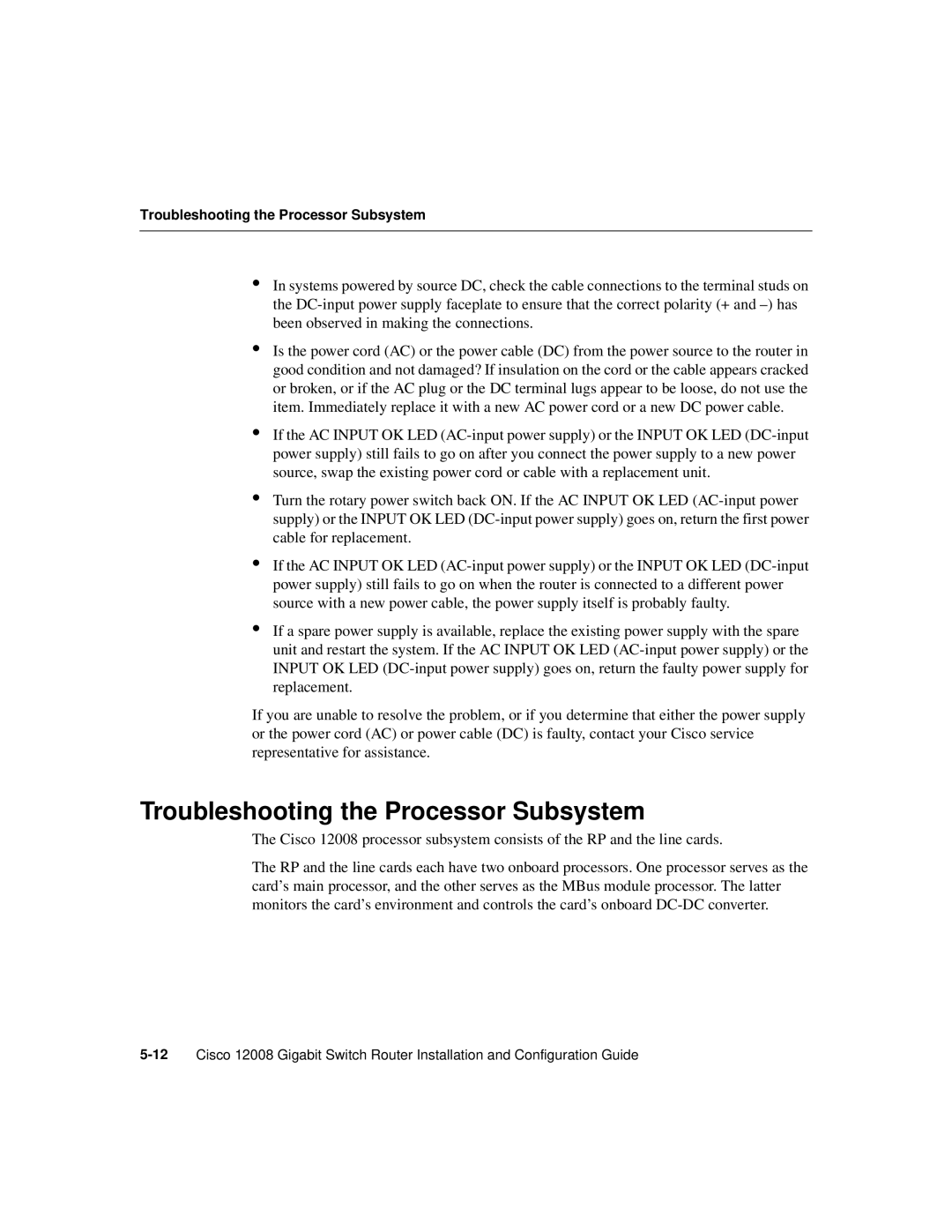Troubleshooting the Processor Subsystem
•In systems powered by source DC, check the cable connections to the terminal studs on the
•Is the power cord (AC) or the power cable (DC) from the power source to the router in good condition and not damaged? If insulation on the cord or the cable appears cracked or broken, or if the AC plug or the DC terminal lugs appear to be loose, do not use the item. Immediately replace it with a new AC power cord or a new DC power cable.
•If the AC INPUT OK LED
•Turn the rotary power switch back ON. If the AC INPUT OK LED
•If the AC INPUT OK LED
•If a spare power supply is available, replace the existing power supply with the spare unit and restart the system. If the AC INPUT OK LED
If you are unable to resolve the problem, or if you determine that either the power supply or the power cord (AC) or power cable (DC) is faulty, contact your Cisco service representative for assistance.
Troubleshooting the Processor Subsystem
The Cisco 12008 processor subsystem consists of the RP and the line cards.
The RP and the line cards each have two onboard processors. One processor serves as the card’s main processor, and the other serves as the MBus module processor. The latter monitors the card’s environment and controls the card’s onboard
